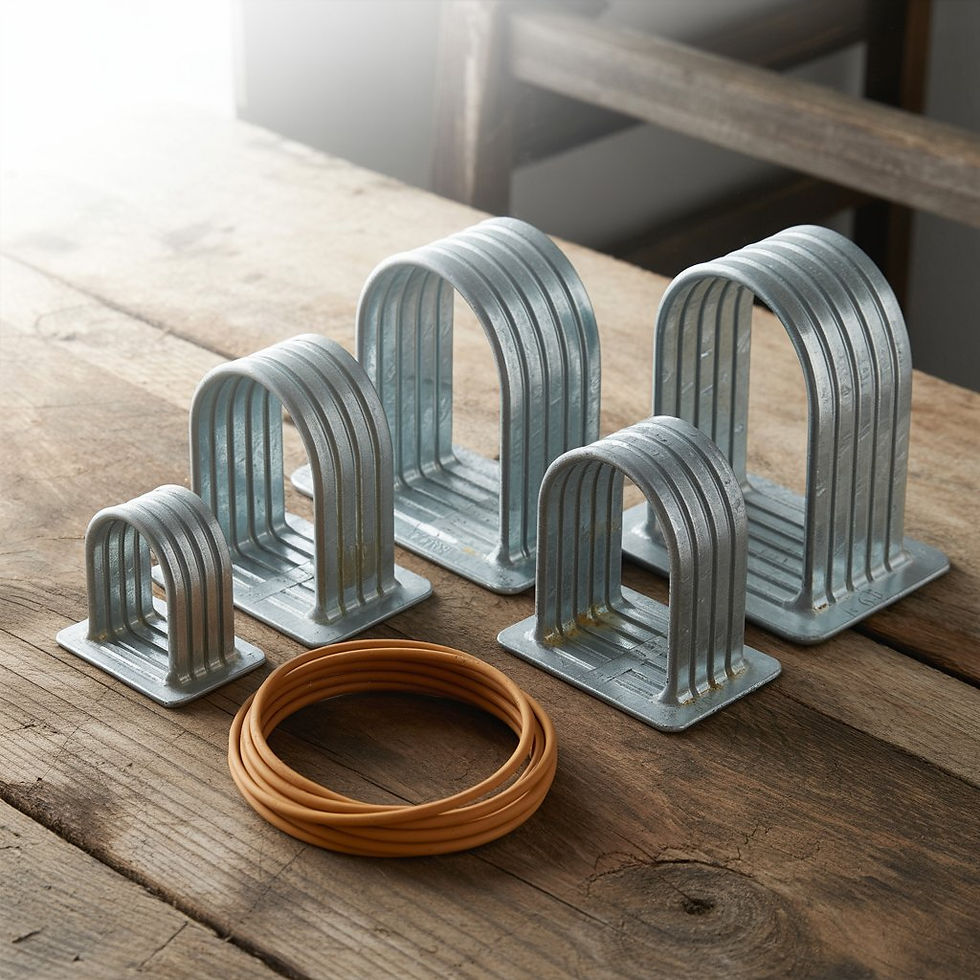Durable High-Voltage Cable Cleats for Harsh Environments
- Nasco Corp
- Aug 18
- 3 min read
Introduction: Securing Power in Tough Conditions
In 2025, durable high-voltage cable cleats for harsh environments include NASCO Corp's Peppers Cable Glands, CMP Triton, Panduit Stainless Steel, Ellis Emperor Trefoil, and TE Connectivity V0 models, crafted from corrosion-resistant 316L stainless steel or halogen-free polymers to withstand corrosion, UV, fire, and short-circuit forces up to 193kA in marine, chemical, and industrial settings. This guide explores features, sourcing, installation tips, mistakes to avoid, and trends for reliable high-voltage cable cleat installations.
What Are High-Voltage Cable Cleats?
High-voltage cable cleats secure cables in demanding systems, preventing movement during faults or vibrations. Ideal for cable trays in harsh environments, they handle electromagnetic forces and thermal stress per IEC 61914 standards.
Key Benefits in Harsh Environments
Corrosion Resistance: 316L stainless steel fights marine or chemical exposure.
Durability: Withstands -40°C to +120°C and UV radiation.
Short-Circuit Protection: Rated for 150–193kA faults.
Compliance: Meets IEC 61914 for safety.
Real-Life Example: Offshore wind farms use NASCO Corp’s Peppers cleats, reducing failures by 25% in saline conditions.
Top Durable High-Voltage Cable Cleats for 2025
These cleats excel in harsh environments, balancing strength and cost.
NASCO Corp Peppers Cable Glands
Features: Corrosion-resistant, high-fault tolerance for HV systems.
Best For: Offshore and industrial applications.
Cost: Competitive with bulk discounts.
CMP Triton
Features: Open hinge, corrosion-resistant for 13–128mm cables.
Best For: Marine and chemical plants.
Cost: Moderate.
Panduit Stainless Steel
Features: 316L steel, tested to 193kA faults.
Best For: Extreme short-circuit protection.
Cost: Premium.
Ellis Emperor Trefoil
Features: Stainless steel, IEC-compliant for three-phase trays.
Best For: Industrial HV setups.
Cost: Moderate.
TE Connectivity V0
Features: Flame-retardant polymer, UV-stabilized.
Best For: Fire-prone areas.
Cost: Affordable.
Expert Insight: NASCO Corp’s Peppers cleats are praised for reliability in renewables.
How to Source Innovative Cable Cleats from Top Suppliers
Sourcing ensures quality and compliance for high-voltage setups.
Identify Needs: Assess environment, voltage, and IEC 61914 requirements.
Research Suppliers: Choose NASCO Corp, CMP, Panduit, or Ellis for certifications.
Evaluate Innovation: Seek smart sensors or eco-materials.
Request Samples: Test in harsh conditions.
Compare Quotes: Balance cost and warranties.
Real-Life Example: Industrial projects source from NASCO Corp for Peppers cleats, cutting procurement time by 20%.
Read this also....How to Source Innovative Cable Cleats from Top Suppliers
Top Tips for Safe and Effective Cable Cleat Installation
Ensure reliable setups with these expert tips.
Plan Layout: Map routes, add cleats at bends (300mm spacing).
Use Proper Tools: Torque wrenches for 10–15Nm.
Check Compliance: Verify IEC 61914 ratings.
Inspect Regularly: Every 6–12 months for wear.
Train Teams: Follow manufacturer guidelines.
Expert Insight: NASCO Corp stresses precise torque for Peppers cleats.
Read this also...Top Tips for Safe and Effective Cable Cleat Installation
Avoiding Common Mistakes with Cable Cleats for Cable Trays
Prevent errors for reliable tray systems.
Mistake 1: Incorrect Sizing
Leads to slippage.
Avoid By: Measure cable diameter accurately.
Mistake 2: Improper Spacing
Causes sagging or excess costs.
Avoid By: Use 300–600mm intervals.
Mistake 3: Over-Tightening
Damages insulation.
Avoid By: Apply specified torque.
Mistake 4: Ignoring Environment
Shortens lifespan.
Avoid By: Choose resistant materials.
Real-Life Example: A plant outage from undersized cleats was resolved with NASCO’s Peppers solutions.
Read this also...Avoiding Common Mistakes with Cable Cleats for Cable Trays
Future Trends in Cable Cleat Design for 2025
2025 trends enhance durability and efficiency.
Smart Integration: Sensors for real-time monitoring.
Eco-Materials: Halogen-free polymers for sustainability.
Modular Designs: Stackable for space savings.
Enhanced Durability: Advanced coatings for extremes.
Renewable Focus: Lightweight for solar/wind trays.
Expert Insight: NASCO Corp predicts growth in smart cleat adoption.
Real-Life Example: Data centers use modular cleats, boosting efficiency by 15%.
Read this also...Future Trends in Cable Cleat Design for 2025
FAQs About Durable High-Voltage Cable Cleats
Q: What makes cable cleats durable in harsh environments?
A: 316L stainless steel or V0 polymers resist corrosion, UV, and fire.
Q: How do I source innovative high-voltage cable cleats?
A: Research NASCO Corp, CMP, or Panduit; verify certifications and test samples.
Q: What are top installation tips for cable cleats?
A: Plan spacing, use torque tools, and inspect regularly.
Q: How to avoid mistakes with cable cleats for trays?
A: Ensure proper sizing, spacing, and environmental matching.
Q: What are 2025 trends in cable cleat design?
A: Smart sensors, eco-materials, and modular systems.
Conclusion
Durable high-voltage cable cleats ensure safety in harsh environments. Source from trusted suppliers like NASCO Corp for Peppers Cable Glands, follow installation best practices, avoid common errors, and embrace 2025 trends for reliable systems.



Comments